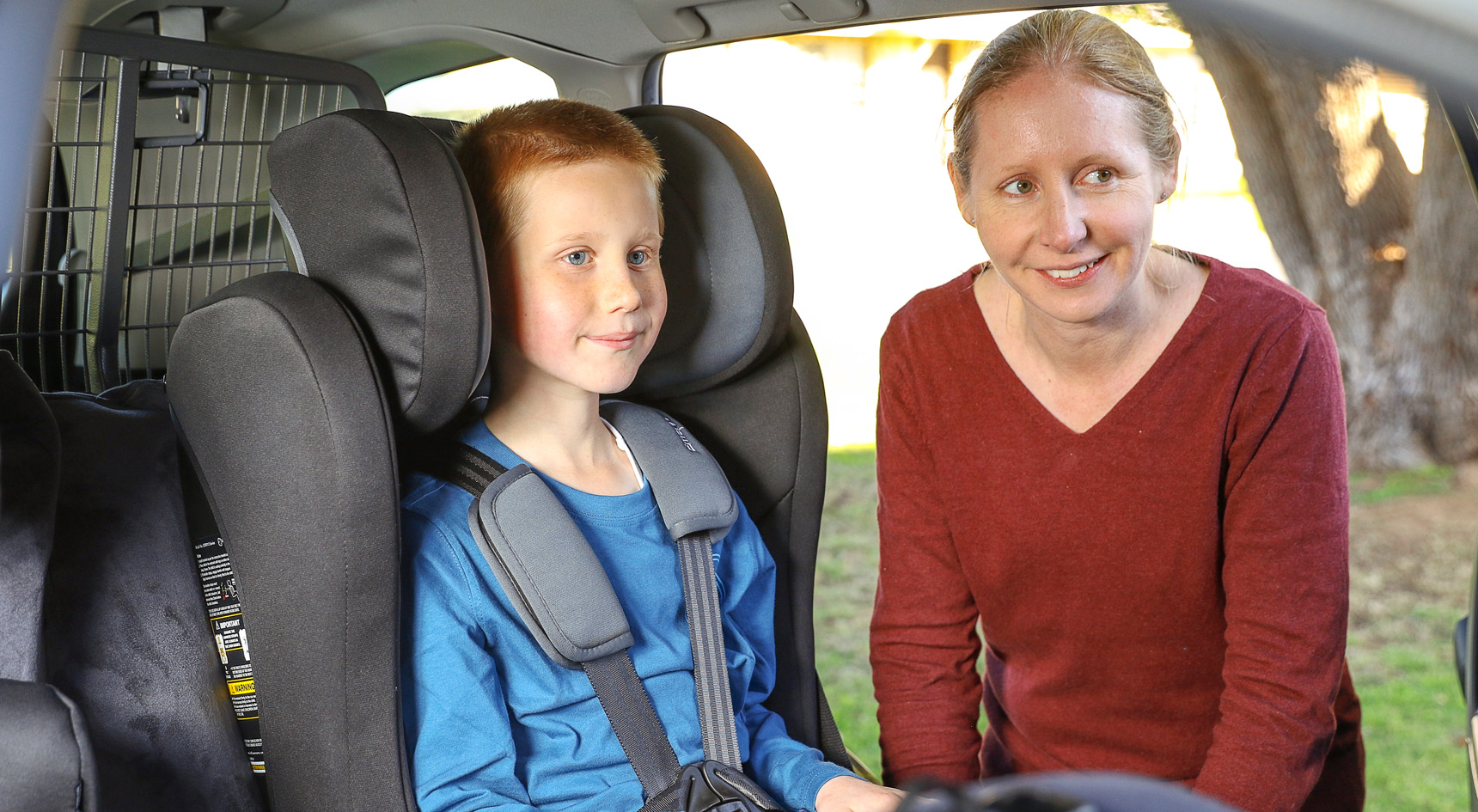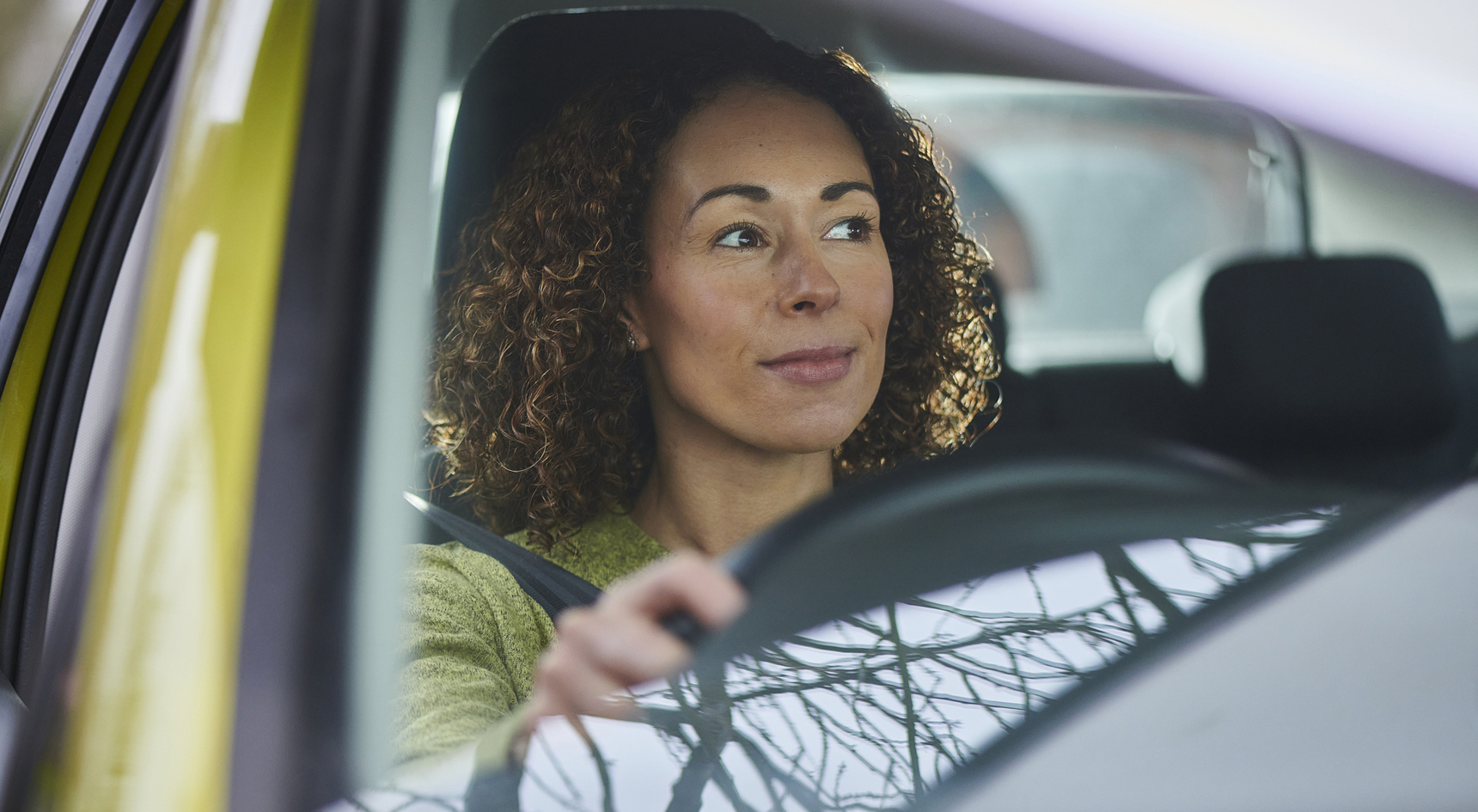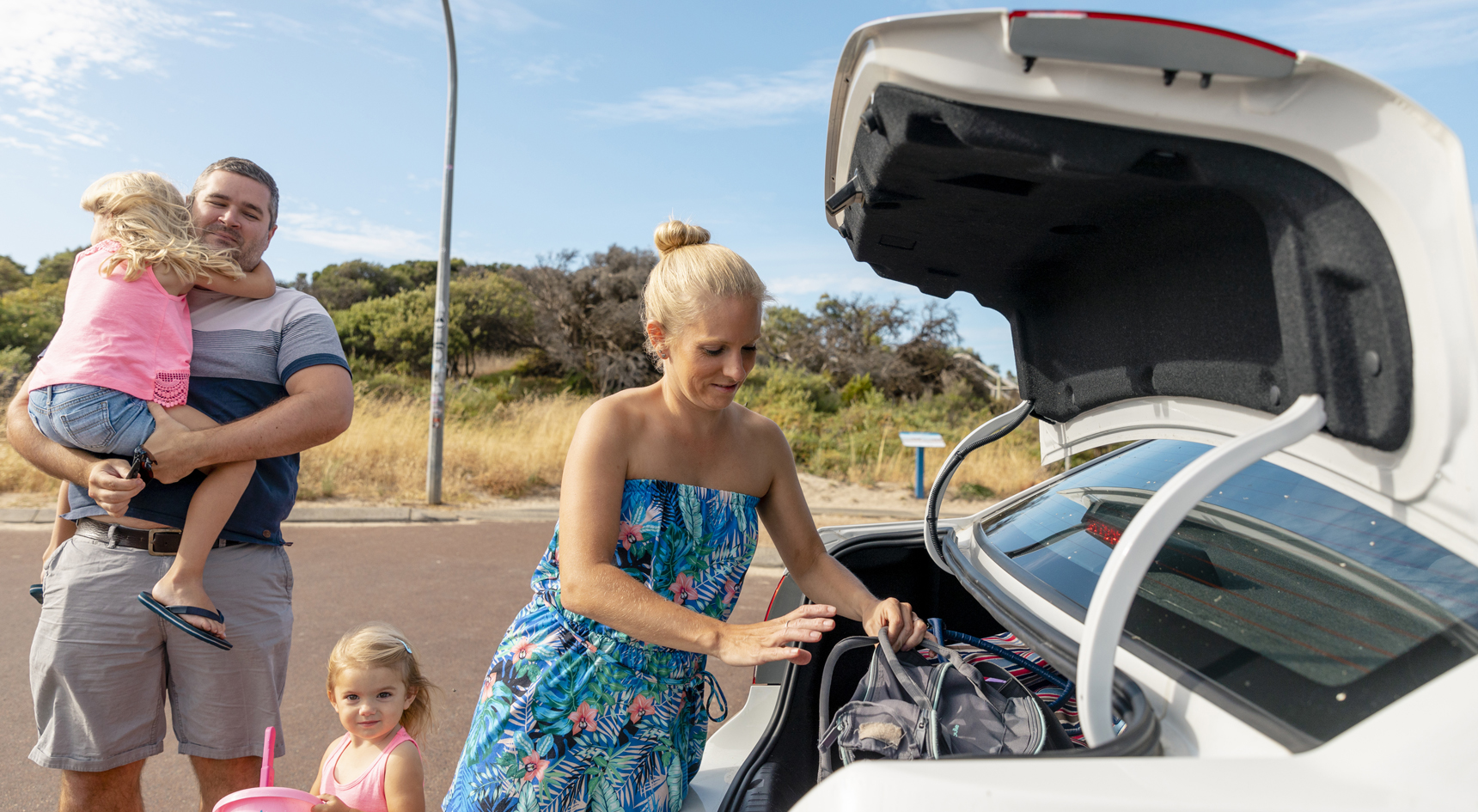Car safety for children

Our youngest road users are some of our most vulnerable – they’re small, often unaware of the dangers of vehicles and yet to develop clear communication skills. With their natural excitement and curiosity, there’s potential for tragedy when children and cars are combined.
We can all keep kids safer in and around cars, whether it’s buying vehicles with safety technology or being extra vigilant behind the wheel. Here are four common situations involving children and cars, and what you can do to help keep them safe.
1. Child restraints
In the car, it might seem like fun to bounce a pudgy, wide-eyed toddler on your knee, or let your pleading six-year-old sit up front so they can see more. But this can lead to severe injuries or worse.
RAA Manager of Community Education Belinda Maloney says children have specific child-restraint needs based on their age and size.
“There are two main factors to consider when transporting children safely – choosing the correct child restraint for the child’s age and size and fitting the restraint correctly. Getting one of these factors wrong could put the child at greater risk of injury in a crash.” Ms Maloney says.
“To ensure your child is safe and in the correct seat for their size and age, check the RAA website for advice, or speak to one of our experts at the Child Safety Centre, where Members can have their child restraint installed or checked for free.”

2. Driveways
Tragically, eight children under five are killed each year in Australia after being run over at low speed, according to Kidsafe. Many of these occur in the driveway. Varying driveway lengths and shapes, and blind spots from the driver’s seat, all put children at risk of injury around moving vehicles. This, combined with parents who may be rushing to get to their destination, make for a dangerous mix.
Cameras and parking sensors have benefits, but they’re mainly designed to prevent vehicle damage and can’t be relied on to detect children around the vehicle. Here are five things you can do to help keep young children safe in driveways:
- Always know where children are and make sure you, or another adult, are close.
- Know your car and any restrictions there may be to your visibility.
- Check your blind spots, cameras and mirrors carefully before moving.
- Take away access to driveways, garages and the street by child-proofing your home with high door handles and barriers including locks and fences.
- Say goodbye inside, or at a safe location – not in the driveway or street.

3. Hot vehicles
When parked in the sun, a vehicle’s interior temperature climbs rapidly. Even on a pleasant day of 24°C, it can be a dangerous 50°C or more inside the car after just 30 minutes. These high temperatures can quickly cause heatstroke in young children when they’re in cars. According to information on the Parliament of Australia’s website, at least 10 children in Australia were reported to have died in a hot car between 2016 and 2021. Data also shows that RAA patrols also had to rescue 284 children from locked cars in 2022 alone.
Even a few minutes can be dangerous, so never leave kids in the car, even if you’re quickly running into the shop or service station. Try to shop without the kids, but if you must take them along, take them with you every time you leave the car.
Some vehicle manufacturers have introduced technology to help, including rear seat alert technology to notify the driver or emergency services if a child has been left in a locked car. These warnings may be visual and/or audible, notifying drivers through the infotainment screen, a honk of the horn, or by sending a message to an app on the driver’s phone. In more advanced systems, the vehicle can call emergency services or turn on the air conditioning and open the windows. Rear seat alert technology is now assessed by ANCAP in new vehicles.
4. Getting your kids in and out of the car
Put the kids in the car, buckle them in, drive to your destination, remove the children and pram, and remember your other belongings – sound familiar? A parent or carer of small children has dozens of things to think about before, during, and after even the shortest car trip. Having more than one child adds another element of danger, and the last thing you want is for one of your kids to run away from the car, into a busy street or car park while you’re preoccupied. The way2go website has comprehensive information on child safety. Here are a few more steps to ensure your kids are safe when getting them in and out of the car.
- When parked, remove the older children first and create a habit where they touch the car’s exterior on the non-traffic side of the vehicle. You could also ask them to stand near a specific landmark on the footpath, like a letterbox, fence or tree, so you know they’re in a safe spot before you attend to the younger children.
- If you’re meeting friends or relatives somewhere, ask them beforehand to stay in their vehicle until you have safe control of your children. A common cause of accidents is young children running excitedly across a road or through a car park when they see someone they know.
- Teach kids about road safety from an early age and set a good example. Always hold their hand near traffic and teach them to ‘stop, look, listen, and think’ before crossing a road and to look to the right first. About 35,000 South Australian children learn these concepts and more each year through RAA’s Street Smart Primary and Street Smart Preschool.

